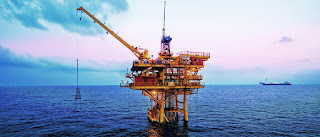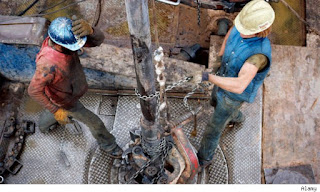In this article main topic will be to show importance of oil and gas courses in islamabad
Gel strength is the shear stress of drilling mud that is measured at low shear rate after the drilling mud is static for a certain period of time. The gel strength is one of the important drilling fluid properties because it demonstrates the ability of the drilling mud to suspend drill solid and weighting material when circulation is ceased.
How can we get the get strength?
We use the 3-rpm reading which will be recorded after stirring the drilling fluid at 600 rpm from a rheometer. Normally, the first reading is noted after the mud is in a static condition for 10 second. The second reading and the third reading will be 10 minuets and 30 minutes, respectively. You may wonder why we need to record the 3-rpm reading after 30 minutes.
Furthermore, following information is provided in detail in oil and gas courses in islamabad
The reason is that the 30 minute-reading will tell us whether the mud will greatly form the gel during an extensive static period or not. If the mud has the high gel strength, it will create high pump pressure in order to break circulation after the mud is static for long time. Furthermore, increasing in a trend of 30-minute gel strength indicates a build up of ultra fine solid. Therefore, the mud must be treated by adding chemicals or diluting with fresh base fluid.
The following causes will result in the high gel strength in the water base mud.
- Bacteria
• Drill solid
• Salt
• Chemical contamination as lime, gypsum, cement, and anhydrite
• Acid gases as Carbon Dioxide, and Hydrogen Sulphide
For an oil base drilling fluid, there are several points that will cause the high gel strength in the mud system as follows.
- Over treatment with organic gelling material
• Build up of fine solid particles in the mud
Operational impacts of the gel strength are as follows:
Cutting suspension ability - Low get strength drilling mud will not be able to efficiently suspend cuttings; therefore, the cutting will quickly drop once pumps are shut down. This can lead to several problems such as stuck pipe, hole pack off, and accumulation of cutting beds.
Barite sag - The barite sag issue mostly occurred because of low gel strength drilling fluid. Hence, the mud weight in the hole will not be constant. You will see that the lower mud weight will be seen at the shallow depth but the heavier mud weight will be noticed at the deeper section of the well. This situation could possibly lead to a well control incident because of insufficient mud weight to balance formation pressure at the shallow section of the wellbore.
Break circulation pressure - If you have highly progressive gel strength fluid, there will be a lot of pressure required to break circulation. Once high pumping pressure is applied, it could lead to break formation and results in lost circulation issue.
Rahman Rashid is best trainer for drilling courses in rawalpindi and please contact 0092-333-5380170 or email trainingcoursespakistan@gmail.com



